Can dogs eat Jello? Yes, they can, but it isn’t recommended. Whether you’re looking to give your pup a special treat or want to make sure you’re not accidentally giving them something that could cause harm, it’s important to know what foods are safe for your dog. For example, one of the most popular snacks humans enjoy is jello, but is it okay for dogs to eat jello?
Let’s take a closer look at whether or not dogs can eat jello and what to keep in mind if you decide to give this tasty snack to your furry friend.
What is Jello?
Jello is made from animal bones and connective tissues boiled in water. The bones are then dried and ground up into a powder form which can be mixed with other ingredients such as sugar, salt, flavoring agents, or food coloring to make the finished product. Gelatin has been used as a food additive since the 19th century but only became famous as a treat for dogs in recent years.
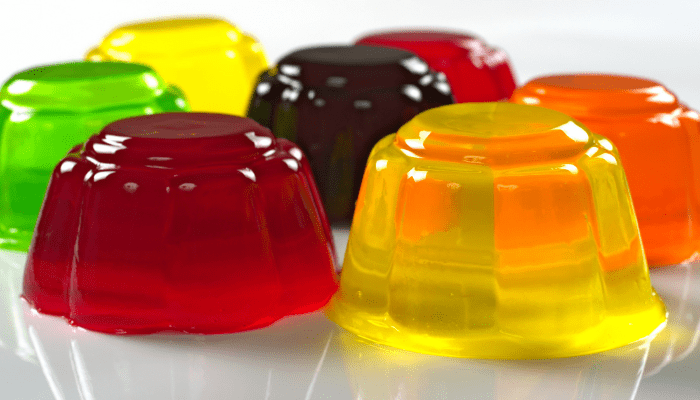
Ingredients of Jello or Gelatin
Gelatin
Gelatin is the main ingredient that makes jello a jello. It comes from boiling down animal by-products, such as skin, tendons, and cartilage, to create powdered gelatin. Gelatin is beneficial for dogs because it helps improve their joint health and digestion and provides essential amino acids that help build strong muscles.
Also, gelatin has hydrating properties, making it great for dogs that don’t drink enough water or are prone to dehydration.
Flavoring Agents
Jellos come in various flavors to tantalize your pup’s taste buds. Most jello treats contain natural flavoring agents such as banana, blueberry, or peanut butter, which make them tasty and provide additional health benefits like antioxidants and vitamins.
Additionally, some treats may contain artificial flavoring agents like saccharin or sucralose, which should be used sparingly since they have harmful side effects if consumed in large quantities.
Sweeteners
Jellos are naturally sweetened with either honey or agave syrup. However, some may also contain other artificial sweeteners like xylitol which should be avoided at all costs as it can be toxic to dogs.
Agave syrup is an excellent choice for sweetening dog treats because it contains fewer calories than honey and has a lower glycemic index making it healthier for your pup’s teeth and waistline.
Coloring Agents
Most jello products use food coloring agents derived from fruits and vegetables to give them vibrant colors (think bright blueberry or strawberry red). While these coloring agents are generally safe for consumption, they can cause an upset stomach if ingested in large quantities, so it’s best to feed your pup jello treats in moderation.
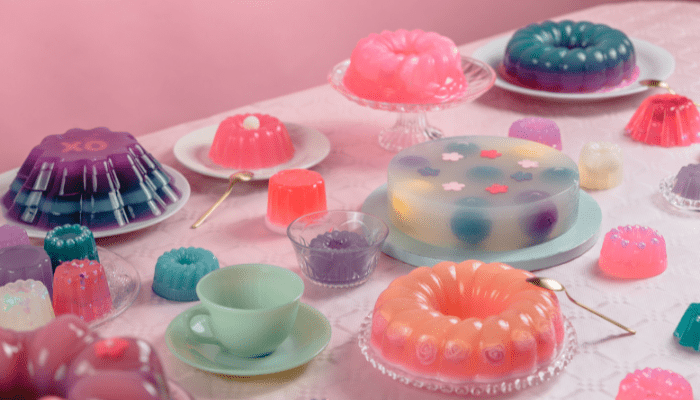
Can Dogs Eat Jello? Is it Okay?
The good news is that jello is not toxic to dogs. It doesn’t contain dangerous ingredients for your pet, such as chocolate or xylitol (an artificial sweetener). However, there are still some things to keep in mind before you offer your pup a bowl of jello.
First and foremost, remember that jello contains sugar, which can lead to weight gain if consumed excessively. If your dog is overweight, consider offering them a sugar-free version of the snack instead. You should also be mindful of artificial food dyes like red dye #40 and yellow dye #5, which can cause stomach upset in some dogs. Choose an all-natural version of jello with natural ingredients only if possible.
Finally, make sure you don’t feed your pet too much jello at once. When consumed in moderation (i.e., one tablespoon per day), it can make for a tasty treat that won’t cause any adverse health effects; however, overindulging can lead to digestive issues like bloating and gas.
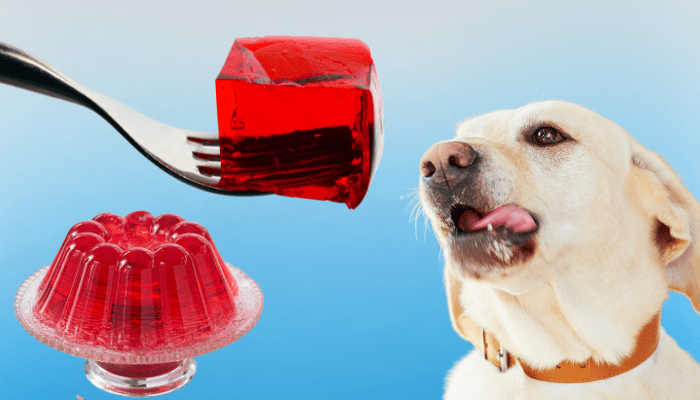
Can My Dog Eat Gelatin?
Yes! In moderation, gelatin can be beneficial for your dog’s health. It provides essential amino acids that help build muscle and promote joint health, so it’s helpful for active dogs or those with arthritis or joint pain.
However, it should only be given in small amounts—no more than one teaspoon per day—as too much could cause a digestive upset like vomiting or diarrhea.
Can dogs eat flavored jello?
You should avoid flavored jello mixes, as they often contain high amounts of sugar or artificial sweeteners that are not good for your pup’s health.
How Can I Give My Dog Gelatin?
The best way to give your dog gelatin is through commercial treats that contain the ingredient on their label. However, natural supplements with just plain gelatin and nothing else are also available—these are usually low in calories and easy to digest for most dogs. You could also make your treats with unflavored gelatin, but ensure you follow the instructions on the package carefully so as not to overfeed your pup!
DIY Jello Recipe for Homemade Dog Treats
Ingredients You’ll Need
To make these homemade treats, you’ll need unflavored gelatin (1 packet per cup of liquid), hot water (1 cup per packet of gelatin powder), and something to form the treats into shapes. For example, you can use mini silicone molds or ice cube trays. You’ll also want an additive like peanut butter or applesauce (1/4 cup per cup of liquid). Finally, add some shredded cheese or bacon if you feel extra creative!
Instructions
Step 1: Mix the hot water and gelatin powder in a bowl. Whisk them together until the gelatin in powder form is completely dissolved. This should take about 5 minutes. Then, if you’re adding an additive like peanut butter or applesauce, mix it before proceeding to step 2.
Step 2: Next, pour the mixture into the molds or trays you’ve chosen and place them in the refrigerator for at least 4 hours to set. Once they have developed and hardened up, your homemade jello treats are ready to enjoy!
Step 3: Finally, when your pup is ready for a snack, pop out one of these cute little jello treats and serve it up – yum!
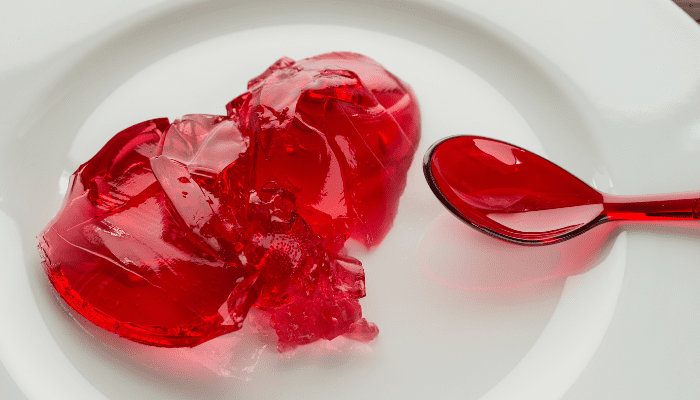
Health Benefits of Jello for Dogs
The main health benefit of jello for dogs is that it provides an excellent source of protein. Protein is essential for any diet, especially when your dog needs extra energy during growth or development. Additionally, jello contains amino acids that help build and repair muscles, reduce inflammation, boost the immune system, and improve circulation.
Jello also offers some nutritional benefits due to its high content of vitamins A, B-12, and K2. These vitamins help keep your pup’s coat shiny and healthy while providing essential minerals like calcium for strong bones and teeth. Finally, jello can help aid digestion by providing probiotics which can help break down food more efficiently in the gut.
Health Risks Associated With Sugar for Dogs
Weight Gain and Obesity
One of the most common health issues associated with consuming too much sugar is weight gain and obesity. In addition, dogs that consume too much sugar are at risk of becoming overweight, which can lead to other health issues such as joint pain, difficulty breathing, and diabetes. To avoid this issue, ensure you’re not giving your pup too many sugary treats or snacks.
Cavities and Tooth Decay
Dogs are at risk of developing cavities and tooth decay from overeating sugar like humans. The bacteria in your dog’s mouth will feed on sugars just as they do in humans; this leads to plaque formation, which can cause cavities and tooth decay over time. Make sure you brush your pup’s teeth regularly with a canine-specific toothpaste to help prevent this issue from occurring.
Liver Disease
Sugar consumption can also put your pup at risk of developing the liver disease due to its high-fat content, which causes an overload on the organ over time. This overload can lead to liver inflammation, known as hepatitis which can have severe consequences if left untreated for too long.
If you notice any signs of liver disease, such as vomiting or appetite changes, make sure you take your dog to the vet immediately so they can begin treatment before it gets worse.
Diabetes
Excessive sugar consumption has been linked to diabetes in humans and animals. For dogs specifically, their pancreas produces insulin which helps regulate their blood sugar levels; however, consuming too much sugar causes their body to become resistant to this insulin, leading them to develop diabetes over time.
If you suspect that your pup may have diabetes, consult with a veterinarian immediately so they can begin treatment immediately before any more damage is done to their body internally due to high blood sugar levels over time without proper treatment or medication management plan needed for diabetic pets.
Behavioral Changes
When a dog consumes too much sugar, it alters its brain chemistry, leading it to become hyperactive or anxious due to the excess glucose entering its system all at once rather than slowly releasing it into its bloodstream through food digestion like usual.
This behavioral shift could also be accompanied by other physical symptoms such as increased urination or thirst due to high amounts of glucose excreted from their bodies.
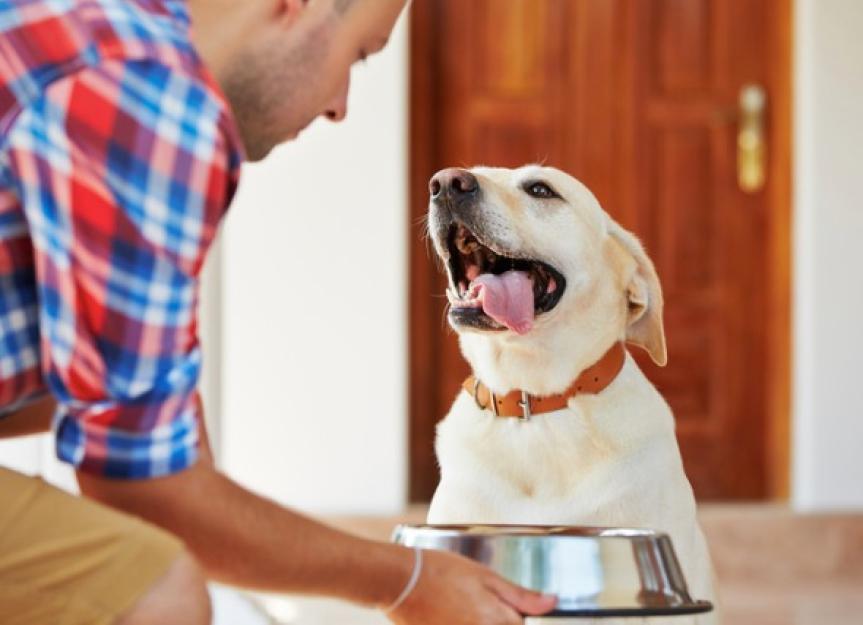
Xylitol Toxicity in Dogs
Does sugar free jello have xylitol? Xylitol is a sugar alcohol used as a sugar substitute in many products, including sugar-free gum, candy, breath mints, baked goods, toothpaste, and vitamins. It has fewer calories than regular sugar and does not contribute to dental cavities like other sugars. However, while it is safe for humans, xylitol can be highly toxic to dogs.
What Are the Symptoms of Xylitol Toxicity?
The symptoms of xylitol toxicity can vary depending on how much your dog consumes. However, they commonly include vomiting, loss of coordination (especially when walking), weakness or collapse, seizures, or abnormal behavior such as depression or aggression. If your dog ingests any amount of xylitol, seek veterinary care as soon as possible.
Can My Dog Eat Jello Shots?
The biggest risk associated with feeding dogs jello shots is the potential for alcohol poisoning. Even if the amount of alcohol in each shot is relatively low, it can still add up quickly if your pup consumes multiple shots in one sitting. This can lead to vomiting, loss of coordination, tremors, and even respiratory failure.
Additionally, jello shots usually contain sugar and other sweeteners, which can harm dogs as they may cause an upset stomach or even weight gain if overconsumed. Finally, some recipes may contain ingredients such as chocolate that are toxic to dogs when ingested in large amounts.
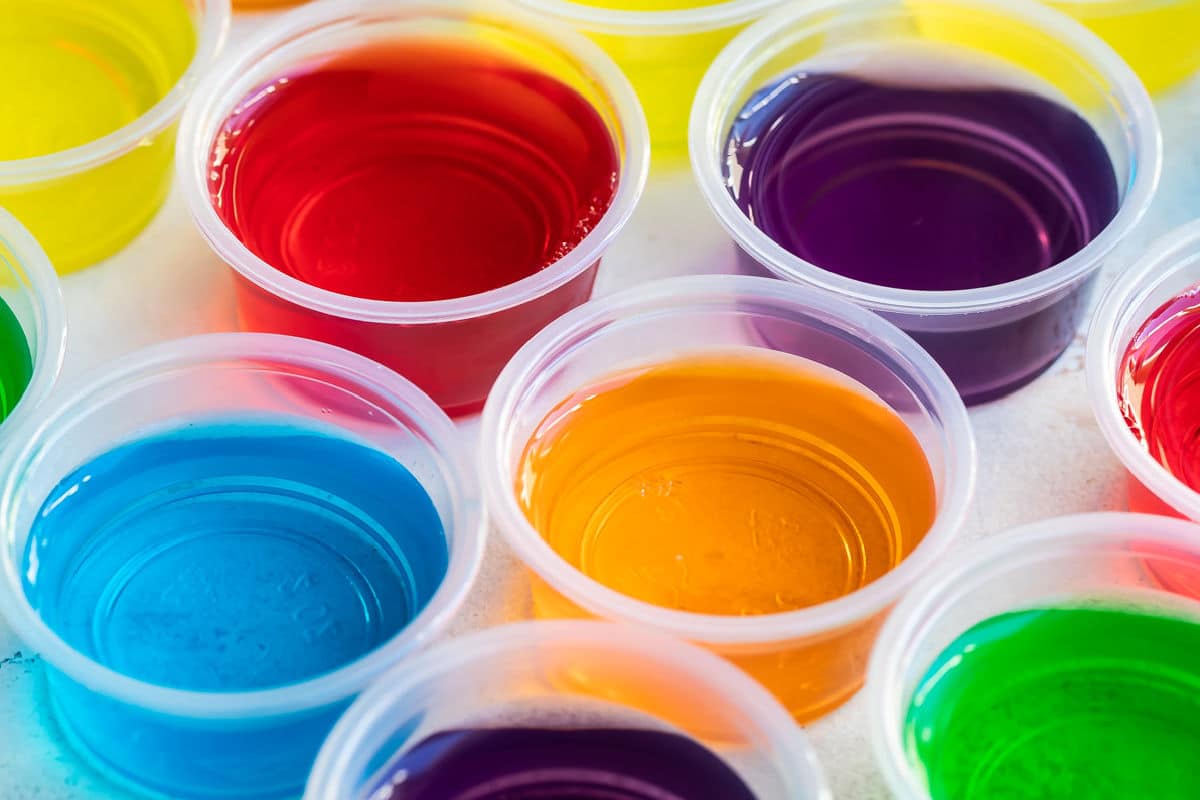
Final Thoughts
In conclusion, can dogs eat jello? Yes, some DIY recipes can be made for dog treats that can be served as a special treat to your pup. However, it is important to remember the potential health risks associated with giving your pup too much sugar, including cavities, tooth decay, liver disease, diabetes, and behavioral changes. If you want to give your pup gelatin, be sure that they only eat sugar free jello.
Frequently Asked Questions
WHAT HAPPENS IF A DOG EATS JELLO?
Gelatin desserts are not safe for your dog. Jello typically contains the artificial sweetener xylitol, which can be highly toxic, and even small amounts could cause hypoglycemia or seizures to occur in dogs– liver failure is also possible if left unchecked.
IS JELLO SAFE FOR A DOG?
Dogs can safely enjoy a small amount of jello as long it does not have xylitol in the ingredients. Most varieties are made with non-toxic elements and will not hurt your pup if they overeat.
CAN I GIVE MY DOG A JELLO SHOT?
The answer to this question is yes, but only if you know what your dog’s diet consists of. Please don’t give them up for dinner if they are inaccurate representations or have any Xylitol in them.
CAN DOGS HAVE DOLE JELLO?
Jello may be tasty and fun for humans, but it’s not a good idea to feed your dog any food with artificial flavors or preservatives like Jell-O.






